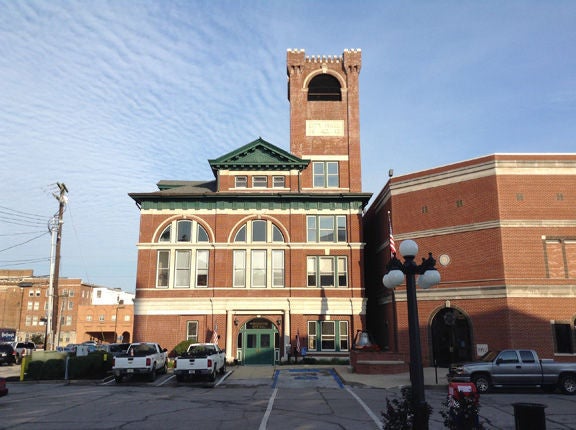Nominations accepted for preservation awards
Published 9:47 am Thursday, February 7, 2019

- Winchester Mayor Ed Burtner presents a champion award to Lara Early Thornbury during the 2017 Preservation Awards ceremony Thursday at Leeds Center for the Arts. (Photo by Fred Petke)
The window is open for nominations for the fourth annual Historic Preservation Awards.
In the past three years, the Winchester Historic Preservation Commission and the Clark County-Winchester Heritage Commission have honored more than 20 projects or people for their work in the community.
WHPC chair J.R. Wilhite said there are six project categories (residential rehabilitation, commercial rehabilitation, interior rehabilitation, site rehabilitation, new construction or special project) and two for individuals (champion and craftsperson).
The deadline for nominations is Feb. 28. Nomination forms are available at the Bluegrass Heritage Museum, Winchester City Hall, the Clark County Public Library, D & S Hardware and the College Park Gym.
Committee members will visit the sites in March, he said, and deliberate in April. The award ceremony will be in May.
To be considered, groups or individuals must have completed the project within the last 24 months, he said.
For the two individual categories, nominees must have completed at least two projects in Clark County, Wilhite said.
“As long as they are involved in two or more projects within the county, time frame is not relevant to them,” he said.
Wilhite said the preservation awards started as a strategic planning exercise; the Heritage Commission wanted to identify ways to educate the broader community about good preservation practices.
“Each year, we hope to find a handful of good projects to not only pat on the back the people who’ve done those projects but to encourage others to do the same,” Wilhite said.
Nominations from the public, he said, are essential to get a complete picture of what is happening in the county.
“Preserving history is important for its own sake and recognizing the people who have made that commitment is really important because even though we never asked how much it cost to do a project, we know that it takes a significant commitment of time and effort and sweat and toil as well as dollars to get these things done,” Wilhite said. “We’re talking about buildings, for example, that may be 100 years old or 200 years old, being cared for in a way that allows them to exist for another century or more.”






